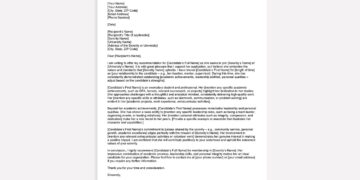In a significant move that aims to empower patients in their healthcare decisions, the Minnesota House of Representatives has taken a bold step forward by approving a bill allowing individuals to proactively refuse opioid prescriptions. This legislative initiative, passed by a health panel, reflects a growing recognition of the complexities surrounding pain management and the opioid crisis that has affected countless lives. As Minnesota grapples with the challenge of balancing effective pain relief with the risks associated with opioid use, this new measure could redefine the doctor-patient relationship, encouraging a more collaborative approach to treatment options. In this article, we will explore the implications of this bill, its potential impact on patient autonomy, and the broader context of opioid prescribing in the state.
Empowering Patient Choice in Opioid Management
The recent approval by the health panel in Minnesota marks a transformative step toward enhancing patient autonomy in the realm of opioid management. This legislative decision empowers individuals to take an active role in their treatment decisions, allowing them to proactively refuse opioids even before a prescription is offered. Such a measure not only acknowledges the growing concerns surrounding opioid misuse and addiction but also fosters a healthcare environment that respects patient preferences and values informed consent.
By enabling patients to opt-out of opioid prescriptions, this bill presents an opportunity to reshape how pain management is approached. Key benefits of this proactive choice include:
- Reduced Risk of Addiction: By declining opioids, patients can diminish the likelihood of dependency.
- Alternative Solutions: This opens the door to exploring diverse pain management alternatives that may be safer and more effective.
- Enhanced Communication: Encouraging conversations between patients and healthcare providers about pain management strategies.
The implications of this legislation extend beyond individual choices—it promotes a broader cultural shift within healthcare practices. Health professionals are now urged to consider and respect the individual needs and preferences of patients. The table below highlights various pain management options that can be discussed as alternatives to opioids:
| Method | Description |
|---|---|
| Physical Therapy | Utilizes exercises and manual techniques to alleviate pain. |
| Acupuncture | A traditional Chinese practice that involves inserting needles to relieve pain. |
| Mindfulness & Relaxation | Techniques that help reduce stress and improve coping mechanisms for pain. |
| Non-Opioid Medications | Involves using NSAIDs and other non addictive medications for pain relief. |

Understanding the Implications of Proactive Refusal Legislation
The approval of proactive refusal legislation in the Minnesota House represents a significant shift in the way healthcare providers will engage with patients regarding opioid prescriptions. This initiative allows individuals to formally indicate their desire not to receive opioids, potentially reshaping patient autonomy in pain management. The implications extend beyond individual choice, encompassing broader societal and medical considerations, particularly in light of the ongoing opioid crisis.
The legislation encourages a culture where patient voices are prioritized, fostering an environment of informed decision-making. It highlights the importance of informed consent, where patients can weigh the risks and benefits of opioid use without pressure. Patients opting for proactive refusal may benefit from alternative pain management strategies, such as:
- Physical therapy
- Acupuncture
- Non-opioid medications
- Cognitive-behavioral therapy
Furthermore, the legislative implications can lead to a transformation in medical practice standards. Healthcare providers may be required to adapt their prescribing protocols, ensuring that discussions about opioid alternatives are part of routine practice. As a result, innovative treatment approaches could emerge, fostering a more holistic view of health and wellness. The table below summarizes the potential benefits associated with this proactive refusal:
| Benefit | Description |
|---|---|
| Enhanced Patient Control | Patients can actively shape their treatment plans. |
| Reduction in Misuse | Limits access to potentially addictive substances. |
| Promotion of Alternatives | Encourages the exploration of non-opioid options for pain relief. |

Exploring the Role of Healthcare Providers in Patient Decision-Making
The evolving landscape of patient care emphasizes the essential role healthcare providers play in guiding patients through the complex maze of medical choices. As legislative measures, like the recent bill approved by Minnesota’s health panel, allow patients to proactively refuse opioids, it becomes increasingly vital for providers to facilitate informed decision-making. This not only empowers individuals but also encourages a collaborative approach to their care journey.
Healthcare professionals must adopt effective communication strategies to ensure that patients are fully informed about their options. Key aspects of this communication might include:
- Patient Education: Providing clear, accessible information about treatment alternatives, including the benefits and risks associated with opioids and non-opioid pain management methods.
- Shared Decision-Making: Engaging patients in discussions that respect their values and preferences, fostering a partnership in the decision-making process.
- Emotional Support: Recognizing and addressing the emotional aspects of refusing medication, which can be a daunting decision for many patients.
The decision to refuse opioids can be complex and should be made in context. A recent study highlights the importance of understanding patient demographics and concerns when discussing pain management options. The table below summarizes key factors influencing patient decisions:
| Factor | Impact on Decision |
|---|---|
| Age | Older patients may prefer non-opioid alternatives due to fear of addiction. |
| Previous Opioid Use | Patients with prior negative experiences are likely to refuse opioids. |
| Support System | A strong support network can encourage patients to explore alternative pain management options. |

Recommendations for Effective Implementation and Public Awareness
To ensure the successful implementation of the new bill permitting patients to proactively refuse opioid prescriptions, a multifaceted approach is essential. Stakeholders, including healthcare providers, policymakers, and community organizations, should work collaboratively to create robust educational materials that convey the risks associated with opioid use and the benefits of alternative pain management strategies. This information should be easily accessible across various platforms, such as websites, social media, and community workshops, fostering a well-informed public.
Public awareness campaigns play a vital role in combatting the opioid crisis. These campaigns should emphasize the following key points:
- Understanding opioid alternatives: Highlight non-opioid pain management techniques, including physical therapy, acupuncture, and mindfulness.
- Recognizing individual rights: Inform patients of their right to refuse opioids without stigma, encouraging open communication with healthcare providers.
- Community support systems: Promote local resources for addiction prevention and recovery, creating a network that empowers individuals to make informed choices.
An effective approach to evaluating the implementation of the bill is to establish metrics that monitor its impact on opioid prescriptions and patient outcomes. The following table highlights some potential indicators to track:
| Indicator | Description | Desired Outcome |
|---|---|---|
| Prescription Rates | Change in the number of opioid prescriptions issued | Decrease in opioid use |
| Patient Knowledge | Surveys assessing patient awareness of their rights | Increased understanding among patients |
| Alternative Therapies Utilization | Tracking the use of non-opioid pain management methods | Higher adoption of alternative treatments |
By integrating education and community engagement into the fabric of this initiative, stakeholders can ensure that the new provisions are beneficial and positively received. Proactive measures in informing and empowering patients are critical in curbing opioid dependency and promoting a healthier, informed public.

The Way Forward
In a significant move towards enhancing patient autonomy, the Minnesota House of Representatives has taken a bold step by approving a bill that empowers individuals to proactively refuse opioid prescriptions. This decision reflects a growing awareness of the opioid crisis and the urgent need for alternative pain management strategies. As the bill advances, it opens the door for further discussions on how healthcare providers can better support patients in making informed choices about their treatment options. By prioritizing patient preferences, Minnesota is setting a precedent that could inspire similar initiatives nationwide. Ultimately, this legislation not only aims to safeguard public health but also to foster a more compassionate, patient-centered healthcare framework that respects individual choices. As we await the next steps in this legislative journey, one thing remains clear: the dialogue surrounding opioids and patient rights is far from over.































